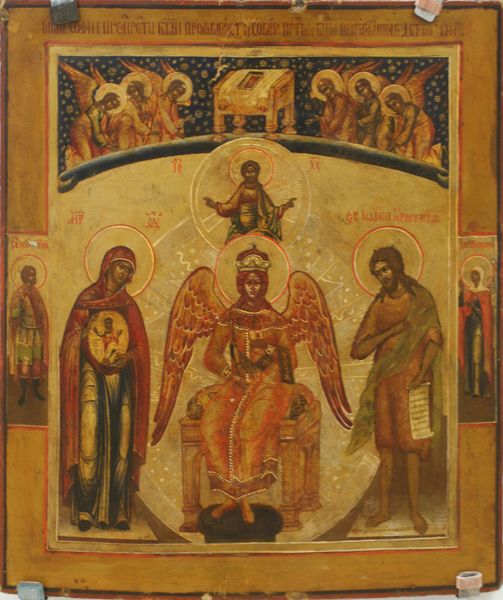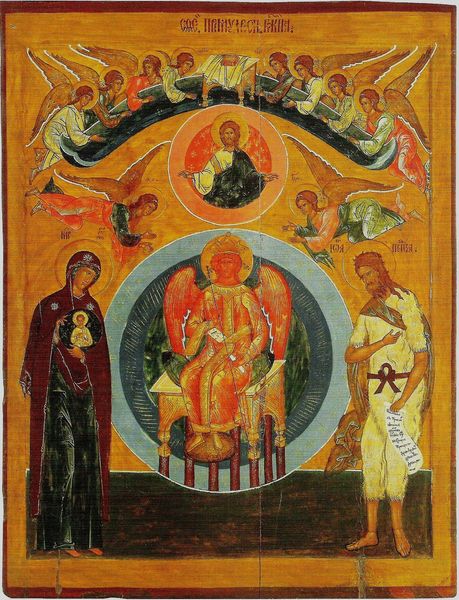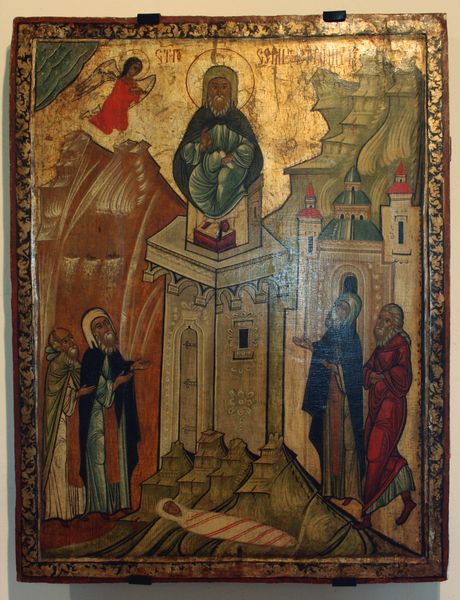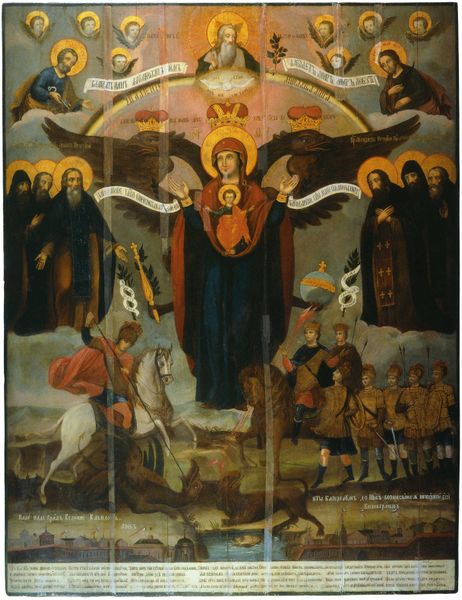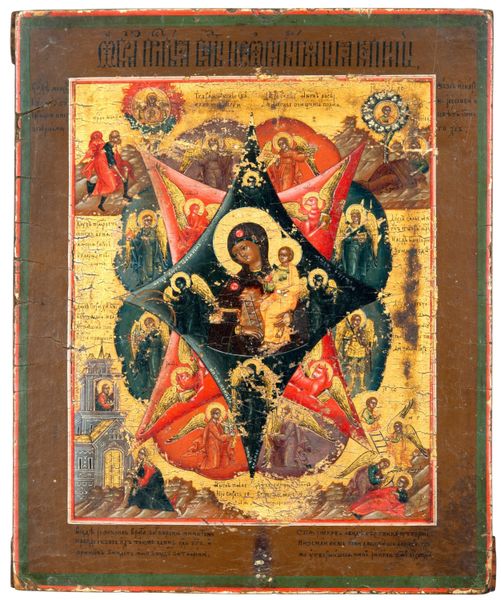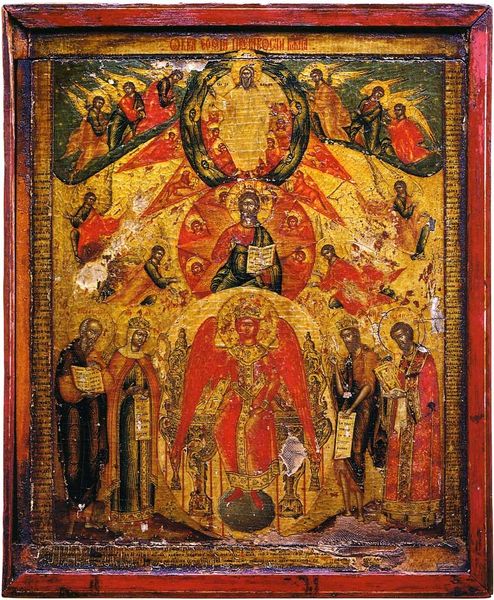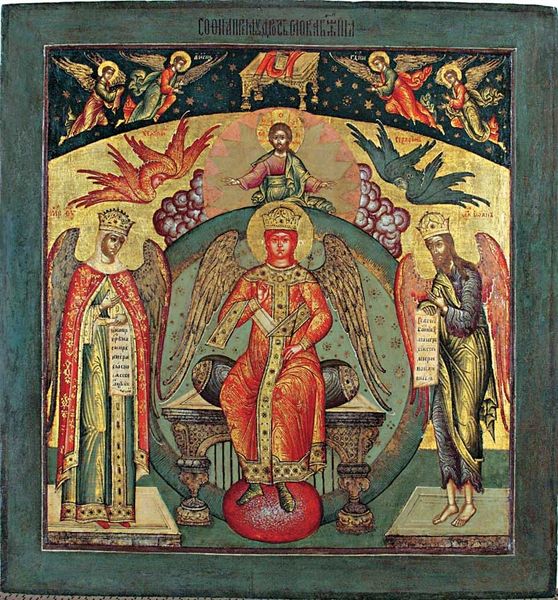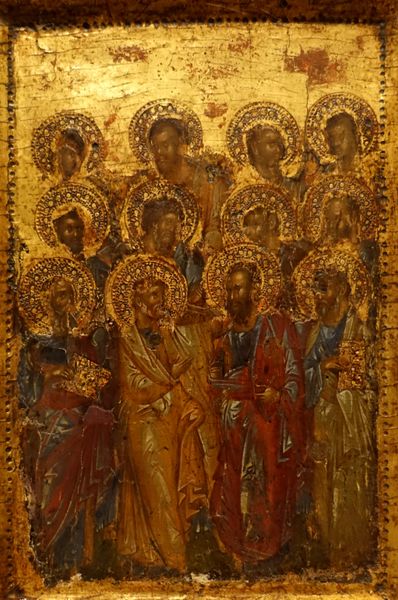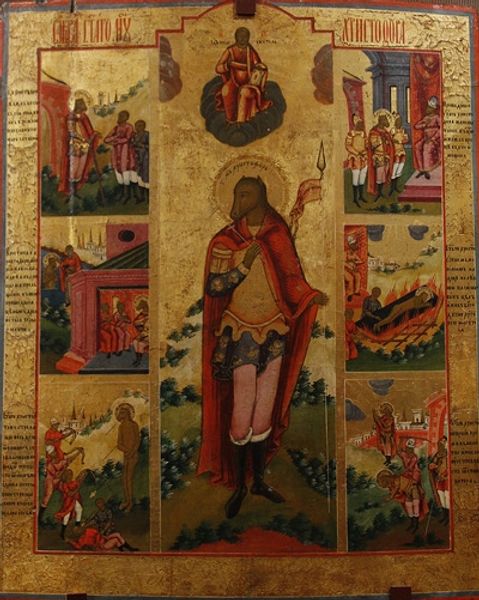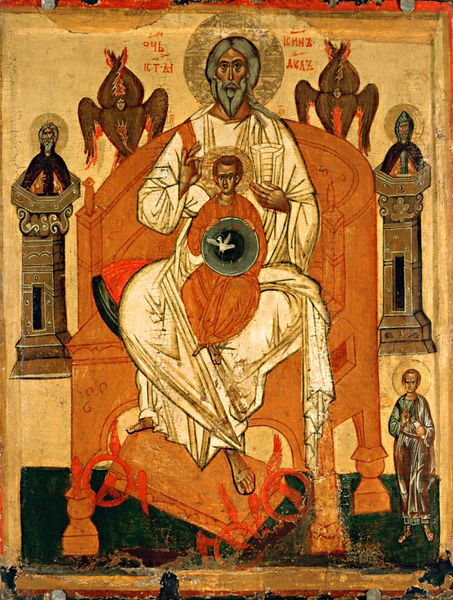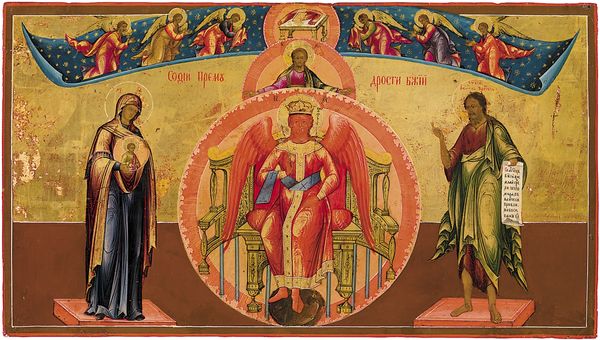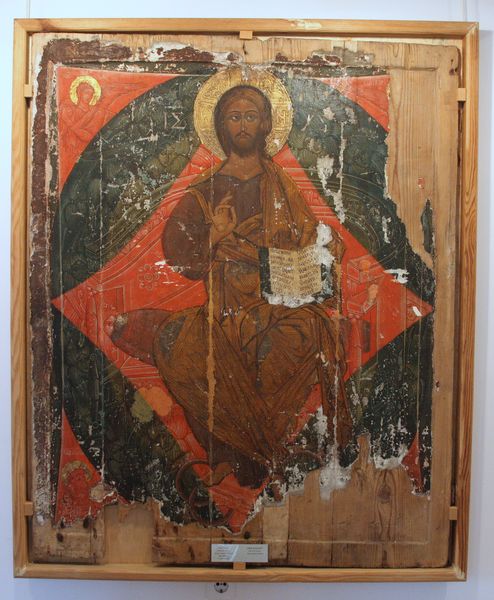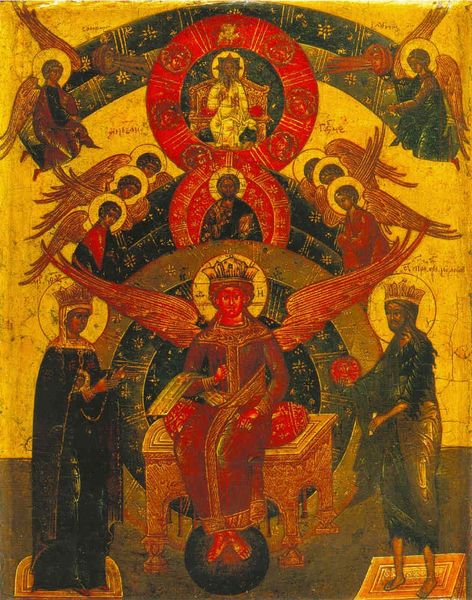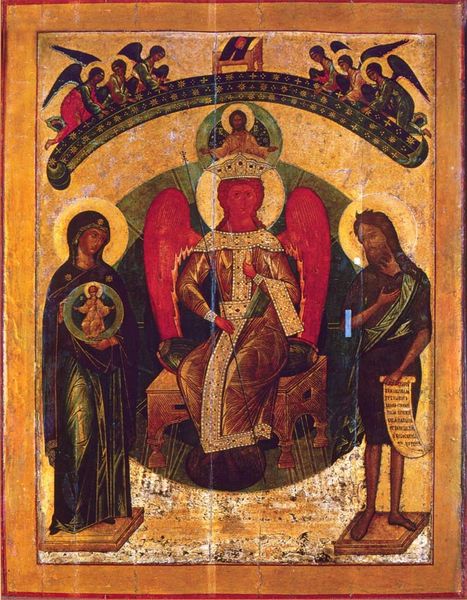
tempera, painting
#
portrait
#
byzantine-art
#
tempera
#
painting
#
figuration
#
oil painting
#
history-painting
Dimensions: 180 x 131.4 cm
Copyright: Orthodox Icons,Fair Use
Curator: This striking icon, "Holy Wisdom," dates back to 1650, originating from Yaroslavl, Russia. It's currently housed in the Yaroslavl Museum of Fine Arts, showcasing Byzantine-influenced tempera painting. Editor: Immediately, I’m drawn to the opulence. The generous use of gold leaf radiating outward conveys a sense of otherworldly luminescence, though also maybe excessive earthly riches. Curator: The icon represents Sophia, divine wisdom, a concept deeply embedded in Orthodox theology and spirituality. Understanding its context demands an appreciation of its role within the sacred space, designed to connect the earthly and heavenly realms, reflecting the sociopolitical milieu in which it was produced. Editor: Right, but let’s think about the tempera, too. It lends itself to these bright, flat planes of color and hard outlines. Tempera painting—the way it's constructed with pigments and egg yolk, painstakingly applied layer by layer – suggests a kind of devotional labor. Curator: Precisely. The composition is layered: celestial beings encircle Christ, enthroned, and saints stand below. How does this visual hierarchy engage viewers through established orthodox visual lexicons, dictating what can and cannot be articulated outside prescribed sociopolitical discourse? Editor: Consider those rays emanating outward—they nearly obscure everything! A real focus on craftsmanship, on making sure that gold is uniformly burnished. We see no evidence of the artist's hand; it’s this consistent level of labor. This connects the creation to more manual processes, something like building and craft production, labor that often disappears into the object itself. Curator: We have to consider how the icon speaks to gender, power and historical narrative through the construction of religious identities. Look how it mobilizes specific color values like red and gold in order to evoke associations to nobility, divine light and religious tradition. Editor: The materiality of religious icons themselves acted as a crucial vehicle through which piety manifested as objects of value. Curator: Ultimately, this image challenges our perception, inviting us to examine not just the figures represented, but also our sociohistorical positions. Editor: A compelling dialogue between devotional act, artistry, material value, and perhaps exploitation within society. Thank you!
Comments
No comments
Be the first to comment and join the conversation on the ultimate creative platform.
